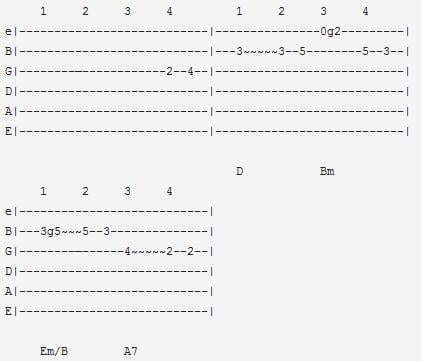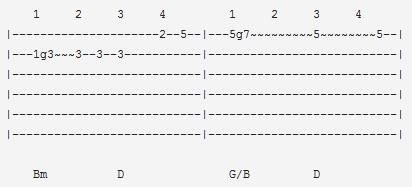Matt23 Celtic Electric - Loch Lomond SI Lesson
Fran (Talk | contribs)
(New page: Category:Student Instructors '''Celtic Electric - Loch Lomond''' Matt23 =SI Introduction= Hey GMC – I'm Matthew Craven. I live in Menstrie, a vil...)
Next diff →
Revision as of 19:39, 16 February 2009
Celtic Electric - Loch Lomond
Contents |
SI Introduction
Hey GMC – I'm Matthew Craven.
I live in Menstrie, a village in Scotland. I'm 14 years old, and have played guitar for about 2 years. Before that I taught myself to play a bit on the keyboard and my sister taught me some chord theory, which was very useful for the guitar. I also had lessons for the oboe, which taught me the basics of music, which was even more useful for playing the guitar. Soon after I started the guitar I gave both up, but I have started playing the keyboard again.
Some of my favourite guitarists are Joe Satriani, Paul Gilbert and Andy McKee. I especially like Joe Satriani because of his brilliant phrasing and technique.
Some of my favourite bands are Dream Theater, Ozzy Osbourne/Randy Rhoads, Iron Maiden, and Rush. I also like quite a lot of modern metal bands, in particular Killswitch Engage. I also like odd songs by other bands of completely different styles, and I am a big fan of the Celtic style.
When I am not practising, I like to snowboard, compose, and play the keyboard.
Anyway, without further ado here's my lesson. I hope you enjoy it.
Introduction
Today I'm going to teach you a beautiful Scottish ballad called "Loch Lomond". The lyrics tell the story of a man who was captured during the Jacobite Rebellion and sentenced to death. He is singing to the other man in his cell about how he will never meet his true love again "on the bonnie, bonnie banks o' Loch Lomond". We can't play lyrics on the guitar so you should try and express the emotion of this song by putting a lot of feeling into your playing.
In this lesson we will be playing some short, on-beat grace notes which are known in Celtic music as "scotch snaps". You need to make sure to play these on the beat, and keep them very fast. Do this by picking the grace note and immediately "snapping" onto the main note. Also I advise playing the vibrato in this lesson quite thinly.
This song is in the Major Pentatonic scale, which is quite common in Celtic music. There are some out notes though (mostly from the Major scale), which are mainly grace notes.
I have included backing tracks of different speeds for you to practise to, as well as a full speed backing track with no click for you to play with when you have finished learning the lesson. I have also included a bonus rock style backing track.
In the lesson we will be using:
- Bending
- Vibrato
- Grace Notes
This lesson is quite easy, as "Loch Lomond" is a slow song so there is nothing very technically challenging to play.
Tone
Here is the Line 6 Podxt preset I used on this lesson. Podxt_Patch.l6t ( 2.09K )
For those of you without a Pod, I used a "Line 6 Chem X Amp", with a 4x12 Treadplate Cab (based on a Mesa Boogie cab), Screamer pedal (based on an Ibanez Tube Screamer), and I boosted the 1KHz frequencies with EQ. I also added a touch of chorus and reverb.
Details
Details
Key: D Major
Time Signature: 4/4
Tempo: 80bpm
Tuning: Standard E
Chord Progression:
D - Bm
Em/B - A7
Bm - D
G/B - D
G/B - D
Em/B - G/B - A7
Bm - G/B - D
Em - A7 - D
x2
I hope you enjoy this lesson!
Video 1
1st Bar: Here we are playing an "anacrusis". This means we are playing some notes before the first beat of the first bar of the section.
2nd Bar: I like to play the first note here with some fast, thin vibrato. Since the note is being played with the index finger, you should do the vibrato with your wrist. Try not to think of it as bending the note back and forth, but as quivering your hand. This should get you a nice vibrato for this note. Also remember to snap quickly from the E to the F# on the third beat. You should snap quickly from the first to the second note like this on every grace note in the piece.
3rd Bar: Here the two notes I like to put vibrato on are fretted by the ring finger. In my opinion this is a harder finger to do vibrato on, so you should get more control over the vibrato by supporting your ring finger with your middle finger. You should still think of the vibrato as a quivering of your hand.
Video 2
1st Bar: In the tab I have only put vibrato on the first note but if you want, try applying it to the following three D notes. It is a matter of personal taste so just experiment and find out what you like best.
2nd Bar: Here I like to make the second vibrato faster than the first, so make sure you don't play the first vibrato very fast, because then you can't make the second one faster.








